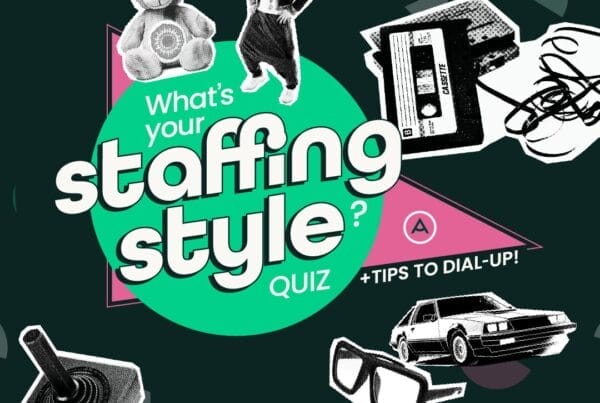Qualified healthcare candidates are in high demand. During our current national nursing shortage, healthcare organizations have found creative new ways to compete for employees, from better benefits to eye-catching job descriptions. We’ll cover that last one, walking through the elements of a strong job post.
How to Write an Effective Nurse Job Description
At the end of the day, nothing beats the basics. No matter how cutting-edge your recruitment marketing is, a compelling job description is still one of the most successful hiring strategies in your toolbox. Strong nurse job descriptions help you isolate the kind of candidates you want to see and showcase your qualifications as a great employer. Advertise your job opportunities effectively to stay ahead of the competition, hire qualified healthcare professionals, and ensure you’re providing excellent medical care.
Let’s take a closer look at what a strong job description looks like by reviewing our top tips.
Name the position clearly and accurately
Clarity is key in job posts, so leave superlatives at the door and state exactly who you’re looking for. According to a 2020 Indeed survey, 36% of job seekers that use job sites search by job title, so you don’t want to miss out on candidates by being unnecessarily creative.
The title “Go-getter Caregiver,” for example, is vague, unhelpful, and might discourage job seekers who read specific implications into “go-getter.” To some, it can sound like they’re expected to work independently without sufficient support or oversight. To others, it may come off as a euphemism for long hours with few benefits.
However, “Senior Registered Nurse” or “Senior RN” gets straight to the point, is easy to search, and lets the job seeker know if they’re a potential fit for the role.
Provide a compelling job summary
This is the core of your job description. Here’s where you convey the most important information in just a few sentences. Provide context upfront, indicating what you look for in new team members, and why you’re a good employer.
Here’s a quick checklist of information to include:
- Your organization’s focus or mission
- Your organization’s location
- The position you’re hiring for
- What the job entails
- Why a jobseeker should work for you
If you include buzzwords like “fast-paced,” “dynamic,” or “flexible,” make sure to support them with context. These terms can all be misinterpreted unfavorably if they’re not properly defined, so include examples of the work environment, opportunities, or scheduling options. Likewise, it’s more meaningful to say you offer a compassionate environment and emotional support if you actually explain how.
Break down job expectations and duties
Here’s where you can break the core job requirements into individual tasks. This section may work best as a bulleted list for easy reading, or several short paragraphs.
Avoid getting sucked into the weeds—general categories of responsibilities work. Paint a broad picture of how this role fits into your organization so the applicant understands what they will do and why they will be valued.
Our client Worthington Healthcare Center offers one helpful example of how to break down a job role into required tasks in this nurse job description sample for Certified Nursing Assistants (CNAs). Duties include creating and receiving resident reports and assisting with food service, cleaning, basic nursing care, and resident activities.
Lay out non-negotiable and negotiable requirements
You only want applications from people qualified to perform the role, so include any credentials, education, and specific skills that are non-negotiable. Make it clear if you only consider candidates who hold an associate’s degree or bachelor’s degree, or if you don’t necessarily need applicants to be college graduates as long as they can perform specific duties in a home or hospital.
After listing requirements, describe preferred or nice-to-have skills, expertise, and traits that aren’t necessary, but would be useful. You can include things like second language fluency, knowledge of specific care plans, medications, and procedures, and experience with families. One approach is to list skills you hope your candidate will learn on the job if they don’t possess them already.
This is also a good place to mention if you offer on-the-job training. Do new hires need to know how to check vital signs and symptoms, or does your rigorous training plan cover the basics for brand new staff nurses? Let them know.
Worthington Healthcare Center’s CNA job description includes the education requirements for an ideal candidate as well as “soft skills” like tact and an interest in applying new methods to current practices.
Include job salary or pay rate and workplace benefits
Here you have the chance to sell your company and stand out from the competition. Since many companies don’t include salary and benefit information in job descriptions, they may miss out on attracting ideal talent.
Posting your salary range works on multiple levels. Firstly, you’re telling candidates you’re committed to transparent operations. And secondly, you’re lessening the chance you’ll see applicants who never planned to accept a role with your budgeted salary.
Try to focus on concrete elements of company culture, like PTO and support networks. Saying that it’s a “fun” or “motivated” environment is really a matter of perspective, and may raise more questions. Offer details, such as the number of vacation days, types of available shifts, and insurance options.
Another Apploi client, Five Star Nursing, lays out the salary and benefits for this CNA position in a bulleted list so candidates can quickly skim their offerings. These include an hourly rate range, flexible scheduling and shifts, voluntary medical insurance options, commuter benefits, and paid orientation.
Add a call to action
Once your candidates know all they need to know about the position, encourage them to apply. Add a sentence or two at the bottom of your nurse job description indicating the next step to move forward. This could mean clicking “Apply,” emailing the hiring manager with their resume, or completing quick-apply on a job site.
Proofread job description for clarity and inclusion
Read and reread your job description before publishing it for all to see. We recommend doing two proofreads. First one for clarity, typos, and continuity—and then one to make sure you’re using gender-neutral and inclusive language.
This tool can help you identify language that might be perceived as gendered. Other tools, like Grammarly, can help you catch spelling and grammar mistakes and readability.
Interested in learning more about how you can recruit, hire, and onboard healthcare staff quickly? Contact us today for a free demo of our human capital management solution.





